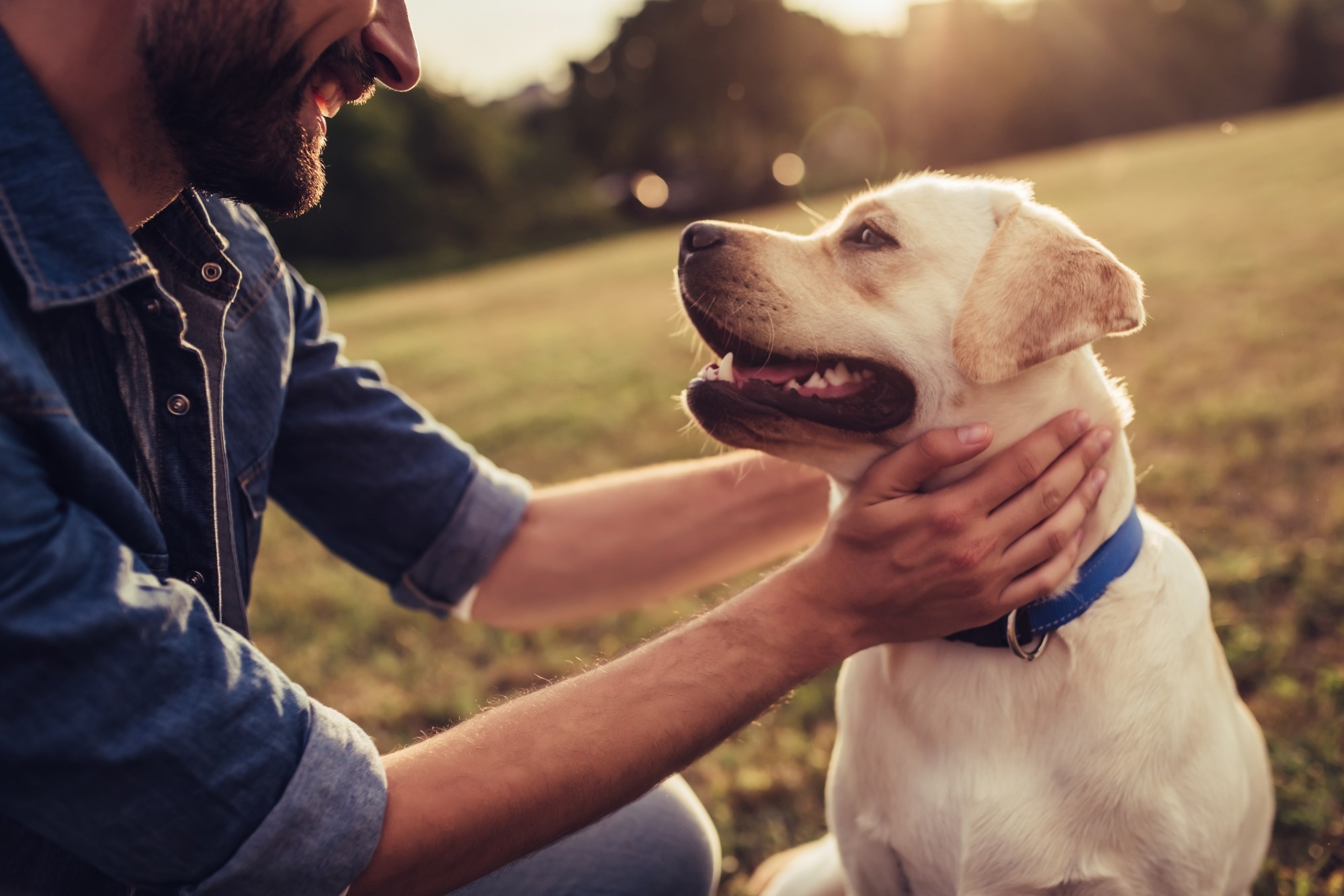Their results indicate that people are significantly less stressed when they interact with dogs, with specific activities showing associations with heightened emotional stability, relaxation, creativity, concentration, and attention.
 Study: Psychophysiological and emotional effects of human–Dog interactions by activity type: An electroencephalogram study. Image Credit: 4 PM production/Shutterstock.com
Study: Psychophysiological and emotional effects of human–Dog interactions by activity type: An electroencephalogram study. Image Credit: 4 PM production/Shutterstock.com
Background
Since the domestication of dogs more than 30,000 years ago, they have been humans’ constant companions, providing invaluable assistance for herding livestock, guarding people and property, hunting, and working in many other domains.
The emotional and physiological benefits of interacting with animals, particularly dogs, are now well-known, as they reduce levels of cortisol and, thus, behavioral distress, anxiety, and stress reactivity and improve mental and cardiovascular health.
This has led to the use of animal-assisted interventions (AAI) and animal-assisted activities (AAA) for various domains such as social work, education, and health.
However, the effects of these interventions have usually been assessed using before-after or experiment-control comparisons, and evidence on the underlying mechanisms, such as changes in brain activity, is lacking.
About the study
In this study, researchers investigated people's psychophysiological responses while interacting with dogs through various activities.
Participants were recruited from an animal grooming academy and pet salons in South Korea, excluding those with cynophobia or dog allergies and a medical history of conditions like unstable angina, high blood pressure, heart surgery, heart attack, or psychopathological disease.
Individuals receiving medication for these conditions or pregnant or lactating were also excluded. During the study, participants avoided stimulants and did not drink caffeinated beverages or smoke.
The dog they interacted with was a four-year-old female poodle who had been trained in aggression, sociability, manners, and basic obedience. She was healthy and vaccinated, and a professional handler was available to ensure her safety.
Participants engaged in eight activities in a single session: meeting, walking, hugging, photography, grooming, massage, feeding, and play. These activities were chosen to prioritize direct interactions and take place over an hour.
Their responses were measured using EEGs for three minutes during each activity, while their emotional responses were assessed using self-reported mood questionnaires such as the Stress Numeric Rating Scale (Stress NRS), the Profile of Mood State (POMS), and the Semantic Differential Method (SDM). Demographic information like weight, height, sex, and age were also collected.
The collected data were analyzed using descriptive statistics, one-way analysis of variance (ANOVA), statistical testing, and Duncan’s post-hoc analysis.
Findings
The study included 30 individuals, of whom 15 were male and 15 were female, and they were 27.9 years old on average.
Results from the EEG analysis showed that playing with the dog significantly increased activity in both frontal lobes and the left prefrontal lobe.
Walking also boosted activity in both prefrontal lobes. Playing correlated with heightened activation in both frontal lobes, while walking specifically activated the right prefrontal lobe.
Massage and grooming activities are elevated in the prefrontal and left frontal lobes. Massage also activated the right frontal lobe. However, no significant differences were found across activities in the parietal and occipital lobes.
Playing with the dog showed consistent activation in multiple brain regions, including those associated with focused attention, meditative states, and cognitive and sensory processing areas.
The subjective reports of emotional states were analyzed across six categories, namely depression-dejection, fatigue, tension-anxiety, confusion, vigor, and anger-hostility.
Individuals reported lower levels of depression, fatigue, and stress during AAAs than they did while resting. They also experienced more vigor when they engaged in feeding, relaxed when they engaged in massaging the dog, and comfortable when they walked her.
Participants experienced more positive mood states when they hugged, massaged, or fed her.
Conclusions
The findings from this study, which included both pet owners and those without pets, support the use of AAI for stress management and emotional relaxation, with different activities eliciting different brainwave reactions.
Responses in the prefrontal lobe are significant as this region plays important roles in regulating memory, language, emotional, behavioral, and cognitive functioning while the parietal lobe is essential for perceiving stimuli, motor function control, spatial orientation comprehension, and sensory information integration.
In addition to the limited sample size, another possible limitation of this study is that participants in AAI are more likely to be those who are not afraid of animals and enjoy being with them.
People without a pre-existing fondness for animals are likely to respond very differently to AAA, and this difference could lead to a selection bias in the findings.
Further studies are needed to validate these findings and shed more light on the mechanisms that make interacting with dogs and other animals so beneficial for humans.